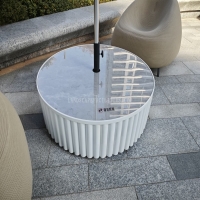Welcome to the website for landscape facilities products and knowledge.
How does the product’s design account for ease of cleaning in hard-to-reach areas?
In the realm of product design, addressing cleaning challenges in confined and hard-to-access areas represents a critical intersection of engineering ingenuity and practical usability. Forward-thinking manufacturers have developed sophisticated approaches to ensure comprehensive cleanability without compromising structural integrity or aesthetic appeal.
Modern solutions incorporate strategically placed access points that transform previously inaccessible zones into manageable cleaning surfaces. These design elements include removable panels with tool-free fastening systems, strategically oriented seams that prevent debris accumulation, and smooth contouring that eliminates dirt-trapping crevices. The integration of quick-release mechanisms allows users to disassemble critical components within minutes, exposing entire internal networks for thorough cleaning.
Material selection plays an equally crucial role in cleaning accessibility. Designers increasingly specify non-porous, microbial-resistant surfaces with low surface tension, causing liquids and contaminants to bead up rather than adhere. This material intelligence extends to color choices that visually highlight areas requiring attention and textured finishes that mask minor imperfections while resisting stain penetration.
Perhaps most innovative are the self-cleaning technologies being incorporated into challenging areas. Micro-textured surfaces utilize microscopic patterns that prevent particle adhesion, while hydrophilic coatings create water-sheeting effects that carry contaminants away from recessed locations. Some advanced designs even integrate strategically placed drainage channels that guide cleaning solutions and dislodged particles toward accessible collection points.
The human factor remains central to these design considerations. Ergonomic studies inform the placement of cleaning access points, ensuring they align with natural movement patterns and require minimal physical strain. Visual indicators highlight maintenance requirements, and integrated tool storage ensures specialized cleaning implements remain conveniently available.
Through this multifaceted approach—combining mechanical accessibility, advanced materials, and user-centered design principles—today's products achieve unprecedented cleanability. This design philosophy not only enhances hygiene and prolongs product lifespan but fundamentally transforms maintenance from a burdensome chore into an intuitive, efficient process that respects both the product and the user's time.
Related search:

Recommendation
Round metal tube border design table with tempered glass or granite countertop on the top.